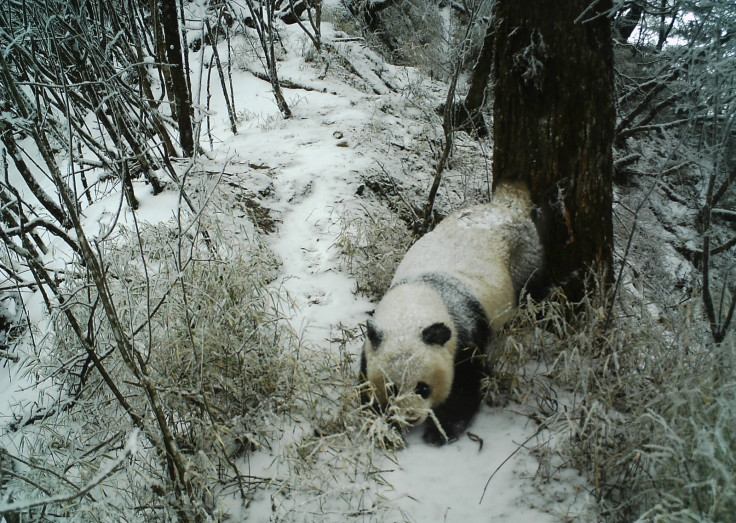Giant pandas are pals in the wild reveals study on secret society
The secret lives of giant pandas has been revealed following a two-year tracking study documenting their day-to-day movements in the Chinese bamboo forests.
Scientists tagged five wild pandas with GPS collars. The pandas were captured, collard and tracked between 2010 and 2012 in the Wolong Nature Reserve in south-west China.
The movements of the pandas – three female adults called Pan Pan, Mei Mei and Zhong Zhong, a young female Long Long and a male dubbed Chuan Chuan – have now been analysed by scientists, providing some surprise results about their behaviour.
For almost a decade, the Chinese government banned GPS trackers being put on pandas in order to protect the endangered species. Previous research has tracked some, but this is the first time the technology has provided detailed information on panda movements and interactions.
Vanessa Hull, a research associate at Michigan State University, which carried out the study, said: "Pandas are such an elusive species and it's very hard to observe them in the wild, so we haven't had a good picture of where they are from one day to the next."
Published in the Journal of Mammalogy, findings showed the pandas appeared to spend time together – previously it was thought pandas were solitary creatures. The data showed Chuan Chuan, Mei Mei and Long Long were all in the same part of the forest at the same time for several weeks outside of the normal mating season.

"We can see it clearly wasn't just a fluke, we could see they were in the same locations, which we never would have expected for that length of time and at that time of year," Hull said.
Findings also showed the male Chuan Chuan travelled over a wider range than any of the females, suggesting he was spending time advertising his presence to all available mates.
Their feeding strategy was also revealed, with pandas having as many as 20 to 30 core areas. Following the bamboo, once they had eaten through one patch, they moved on to the next. However, they then returned to areas after long periods of time, up to six months in some cases, suggesting pandas remember feeding locations and return in anticipation of regrowth.
"They pretty much sit down and eat their way out of an area, but then need to move on to the next place," Hull said.
The wild panda population has increased by 17% over recent years following intense conservation efforts. In total, there are believed to be 1,864 pandas living in the wild.
Study co-author Jindong Zhang said: "This was a great opportunity to get a peek into the pandas' secretive society that has been closed off to us in the past."
Hull added: "Once we got all the data in the computer we could see where they go and map it. It was so fascinating to sit down and watch their whole year unfold before you like a little window into their world."
© Copyright IBTimes 2024. All rights reserved.







